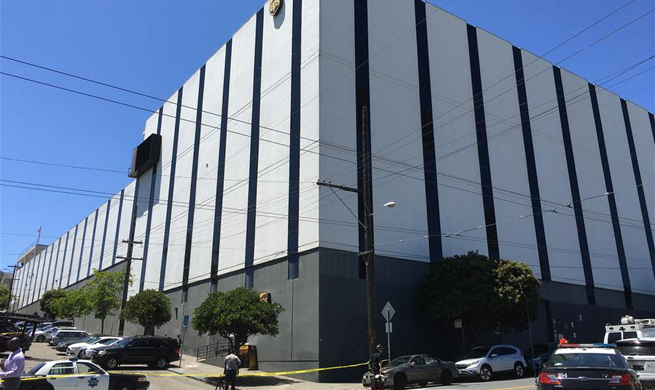BEIJING, June 15 (Xinhua) -- The U.S. Federal Reserve on Wednesday raised the benchmark interest rates by a quarter point and unveiled a plan to start trimming its balance sheet, showing increasing confidence in the U.S. economy and improving job market.
The hike, which raised the target range for the federal funds rate to 1 to 1.25 percent, could lead to higher borrowing costs for consumers and businesses and slightly better returns for savers.
"In view of realized and expected labor market conditions and inflation, the (Federal Open Market) Committee decided to raise the target range for the federal funds rate to 1 to 1.25 percent," said the Fed in a statement after concluding its two-day monetary policy meeting.
The increase in the Fed's short-term rate was the second rate hike this year and the fourth since it began raising rates in December 2015.
Describing the rate hike as economic progress, the Fed also foresees one additional rate hike later this year but gave no details on when it might occur.
It acknowledged the continuous progress in the labor market while expressing concerns over weak inflation.
Fed officials lowered their forecast for the unemployment rate for 2017 down to 4.3 percent, compared to the 4.5 percent projection made in March, while their forecast for the inflation rate in 2017 was revised down to 1.6 percent from their forecast of 1.9 percent in March, showed the economic projections released on Wednesday.
Despite the weak inflation, the central bank continues to see improvement in the economy. "Household spending has picked up in recent months, and business fixed investment has continued to expand," said the Fed in the statement.
Given the stable economic conditions, the Fed also expects to begin the normalization of its 4.5-trillion-U.S.-dollar balance sheet later this year.
"The Committee currently expects to begin implementing a balance sheet normalization program this year, provided that the economy evolves broadly as anticipated," the Fed said in the statement.
"We anticipate reducing reserve balances and our overall balance sheet to levels appreciably below those seen in recent years but larger than before the financial crisis," Fed Chair Janet Yellen told a press conference.
She added that the plan aims to avoid creating market strains, and to allow the market to adjust to a very gradual and predictable plan.
The Fed, according to the plan, will start with monthly reductions in Treasury holdings of no more than 6 billion dollars and 4 billion dollars in mortgage bonds. Those figures will rise by 6-billion-dollar increments every three months over a 12-month period until they reach 30 billion dollars per month.
Moody's Investors Service said the group was closely monitoring how the Fed would roll down its balance sheet to limit potential negative spillover.
U.S. stocks closed mixed Wednesday, with the Dow Jones Industrial Average refreshing its closing record, as investors digested the Federal Reserve's decision to raise interest rates by a quarter point.
The Dow Jones Industrial Average rose 46.09 points, or 0.22 percent, to 21,374.56. The S&P 500 fell 2.43 points, or 0.10 percent, to 2,437.92. The Nasdaq Composite Index was down 25.48 points, or 0.41 percent, to 6,194.89.
The dollar was largely flat against a basket of currencies after reversing earlier losses. However, the price of gold went down.
Apart from the rise in interest rates, Fed policymakers meanwhile kept their forecast for this year's economic growth at 2.2 percent, slightly up from their March projection, with growth of 2.1 percent in 2018 and 1.9 percent in 2019.
Although a retreat in inflation over the past two months has triggered worries that a sustained shortfall could change the pace of future rate hikes, the Fed remained upbeat that inflation would ascend to its target over the medium term supported by a robust labor market.
"The recent run of weaker core inflation readings has clearly rattled some Fed officials. However, the undershoot in unemployment prompted the Fed to lower the median forecast for the unemployment rate for next year from 4.5 percent to 4.2 percent," said Paul Ashworth, chief North American economist of Capital Economics.
Thus, the median interest rate projections were left unchanged at 1.4 percent for end-2017 and 2.1 percent for end-2018, implying one more rate hike this year and an additional three next year.
"We still expect a more rapid decline in the unemployment rate will persuade the Fed to hike rates twice this year and four times next year," he said.

















